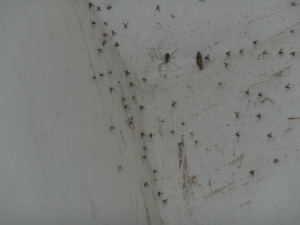
Leishmaniasis is an important disease and the parasite is transmitted by blood-sucking sand flies with approximately two million new cases every year and one tenth of the world’s population at risk of infection. The WHO give a good introduction about the current situation around the world regarding Leishmaniasis.
Leishmania are parasites transmitted by the bite of the small midge–like phlebotomine sand fly.

One of the main ways to control leishmaniasis is to control the insect or disrupt the insect part of the parasite life cycle but our knowledge of the sand fly in relation to development of the parasite is inadequate for developing new targets for control.
One of my main projects is to identify the genes involved in the interaction of the sand fly and the parasite that it transmits and this will greatly extend our knowledge of the interaction between insect and Leishmania and provide a sound basis for developing new control systems for this disease. We are also involved in field based research examining sand fly biology and the spread of the disease in urban environments in N.E. Brazil.
Short Video clips of sand fly collecting sites in Teresina Brazil.
http://player.vimeo.com/video/12853020
More backyard sand fly collecting from Rod Dillon on Vimeo.
- Afghanistan hit by skin disease (bbc.co.uk) People in Kabul are suffering from leishmaniasis; in this case the less serious cutaneous form of the disease. However this causes unsightly skin lesions and carries social stigma and may prevent young girls from finding a suitable partner.
- Observations of a Nerd Ah, the joys of a tropical getaway. There’s warm, clear waters, soft, sandy beaches, and of course, a whole ton of amazing parasites waiting to gorge on your delicious flesh……..




